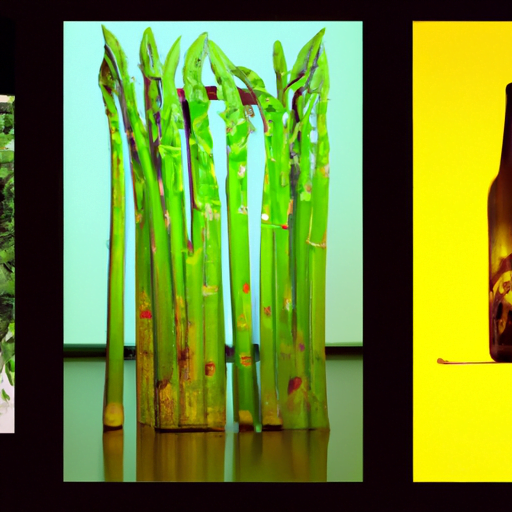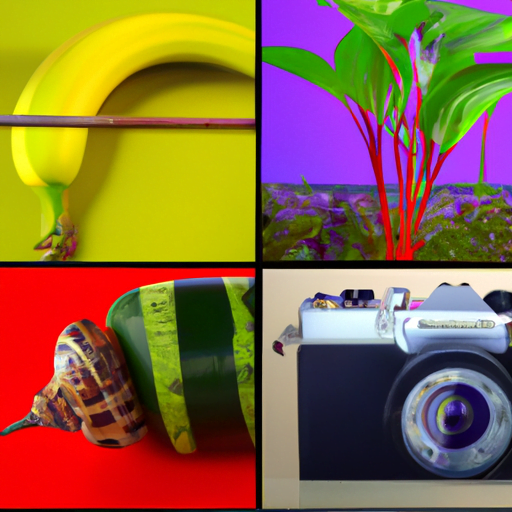
-
Table of Contents
- The Intersection of Nature and Design: Biophilic Artworks
- What is Biophilic Design?
- The Benefits of Biophilic Artworks
- 1. Stress Reduction and Improved Well-being
- 2. Increased Creativity and Productivity
- 3. Connection with Nature
- Examples of Biophilic Artworks
- 1. Patrick Dougherty’s Stickwork
- 2. Andy Goldsworthy’s Land Art
- 3. Olafur Eliasson’s “The Weather Project”
- Case Studies: Biophilic Artworks in Practice
- 1. Amazon Spheres, Seattle
- 2. Singapore Changi Airport, Terminal 4
- Conclusion
The Intersection of Nature and Design: Biophilic Artworks

Art has always been a medium for expressing human emotions, ideas, and experiences. Throughout history, artists have drawn inspiration from various sources, including nature. The connection between nature and art is not a new concept, but in recent years, there has been a growing trend towards incorporating nature into design through biophilic artworks. These artworks not only enhance the aesthetic appeal of spaces but also provide numerous benefits to individuals and the environment. In this article, we will explore the intersection of nature and design and delve into the world of biophilic artworks.
What is Biophilic Design?
Biophilic design is an innovative approach that seeks to reconnect people with nature by incorporating natural elements into the built environment. It is based on the concept of biophilia, which suggests that humans have an innate affinity for nature. Biophilic design aims to create spaces that mimic natural environments, promoting well-being, productivity, and overall happiness.
Biophilic design principles can be applied to various aspects of the built environment, including architecture, interior design, and even artwork. Biophilic artworks, in particular, play a crucial role in bringing nature indoors and creating a sense of harmony between the natural and built environments.
The Benefits of Biophilic Artworks
Biophilic artworks offer a range of benefits, both for individuals and the environment. Let’s explore some of the key advantages:
1. Stress Reduction and Improved Well-being
Studies have shown that exposure to nature, even in the form of artwork, can significantly reduce stress levels and improve overall well-being. Biophilic artworks create a calming and soothing environment, helping individuals feel more relaxed and at ease. The presence of natural elements in artwork, such as landscapes, plants, and animals, can evoke positive emotions and enhance mood.
For example, a study conducted by the University of Exeter found that employees working in offices with biophilic elements, including artwork, reported a 15% increase in well-being and productivity. The incorporation of biophilic artworks in healthcare settings has also been shown to have positive effects on patients, leading to faster recovery times and reduced stress levels.
2. Increased Creativity and Productivity
Nature has a profound impact on our cognitive abilities, including creativity and productivity. Biophilic artworks can stimulate the imagination and enhance cognitive function, leading to increased creativity and productivity in various settings, such as offices, schools, and creative spaces.
A study conducted by the University of Melbourne found that employees working in offices with natural elements, including artwork, showed a 15% increase in creativity compared to those in conventional office spaces. Similarly, students exposed to biophilic elements, such as nature-inspired artwork, demonstrated higher levels of creativity and problem-solving skills.
3. Connection with Nature
Biophilic artworks provide a means for individuals to connect with nature, even in urban environments where access to green spaces may be limited. These artworks serve as a reminder of the beauty and importance of the natural world, fostering a sense of connection and appreciation for the environment.
For example, the “Water Lilies” series by Claude Monet is a renowned biophilic artwork that depicts the beauty of nature through vibrant colors and organic forms. These paintings allow viewers to immerse themselves in the tranquility of a water garden, evoking a sense of connection with nature.
Examples of Biophilic Artworks
Biophilic artworks can take various forms, ranging from paintings and sculptures to installations and murals. Here are some notable examples:
1. Patrick Dougherty’s Stickwork
Patrick Dougherty is an artist known for his large-scale installations made from woven branches and twigs. His artworks often resemble natural structures, such as nests, hives, and cocoons. These installations blend seamlessly with their surroundings, creating a harmonious relationship between art and nature.
2. Andy Goldsworthy’s Land Art
Andy Goldsworthy is a renowned artist who creates temporary artworks using natural materials found in the environment, such as leaves, stones, and ice. His land art installations highlight the ephemeral nature of art and the interconnectedness of humans and the natural world.
3. Olafur Eliasson’s “The Weather Project”
“The Weather Project” by Olafur Eliasson is an immersive installation that recreates the experience of a sunset using artificial light and mist. The artwork, exhibited at the Tate Modern in London, creates a mesmerizing atmosphere, blurring the boundaries between art and nature.
Case Studies: Biophilic Artworks in Practice
Several real-world examples demonstrate the successful integration of biophilic artworks into various settings:
1. Amazon Spheres, Seattle
The Amazon Spheres in Seattle are a prime example of biophilic design, incorporating a vast array of plants and trees into the workspace. The interior of the spheres features biophilic artworks, including large-scale murals depicting lush forests and vibrant ecosystems. These artworks not only enhance the aesthetic appeal of the space but also contribute to the overall well-being and productivity of employees.
2. Singapore Changi Airport, Terminal 4
Singapore Changi Airport’s Terminal 4 is renowned for its biophilic design, which includes a range of biophilic artworks. The terminal features a kinetic sculpture called “Petalclouds,” inspired by the movement of clouds and flowers. The artwork creates a sense of wonder and delight, providing passengers with a unique and memorable experience.
Conclusion
Biophilic artworks offer a powerful means of bringing nature into the built environment, creating spaces that promote well-being, creativity, and connection with the natural world. These artworks have been shown to reduce stress, improve productivity, and enhance overall happiness. From large-scale installations to nature-inspired paintings, biophilic artworks have the potential to transform spaces and enrich the lives of individuals. As the world becomes increasingly urbanized, the integration of biophilic design and artworks becomes even more crucial in creating sustainable and harmonious environments.
